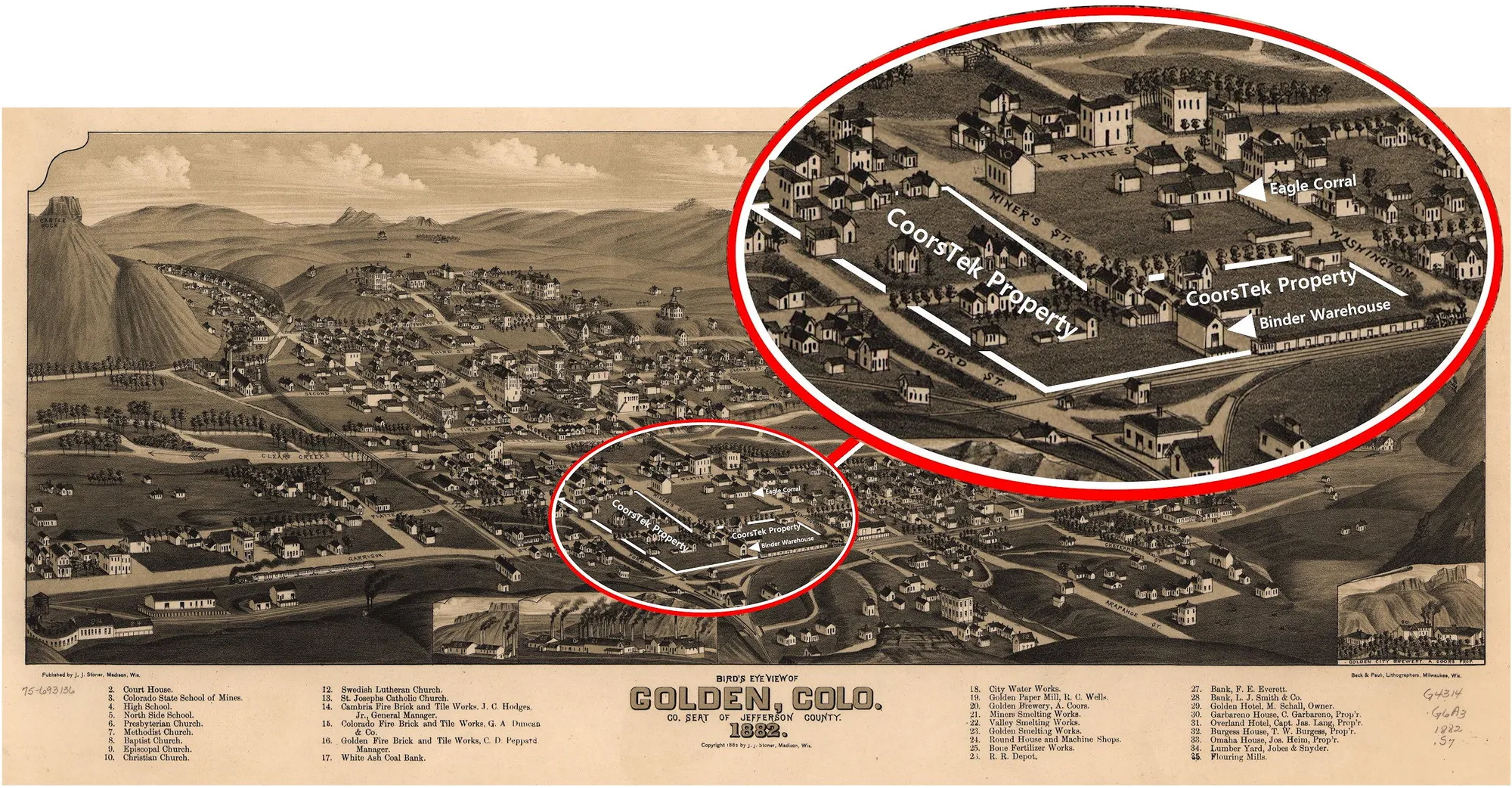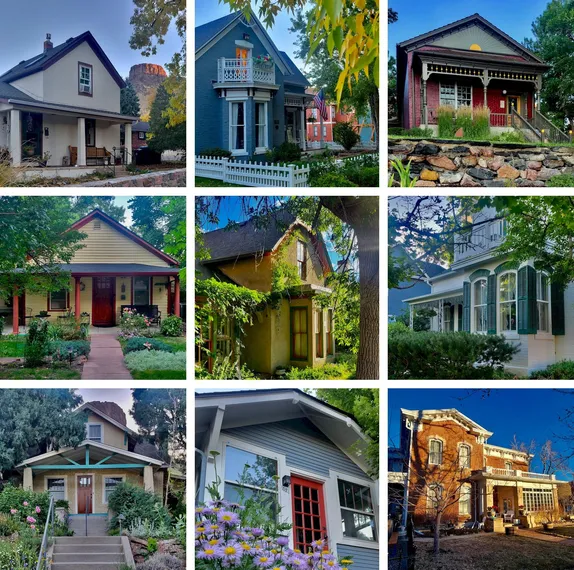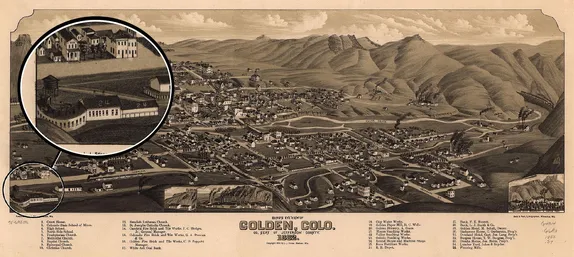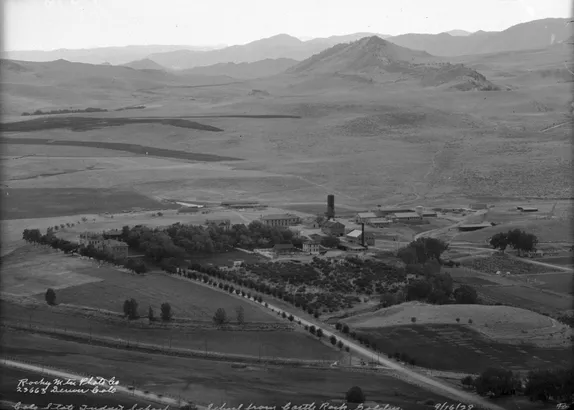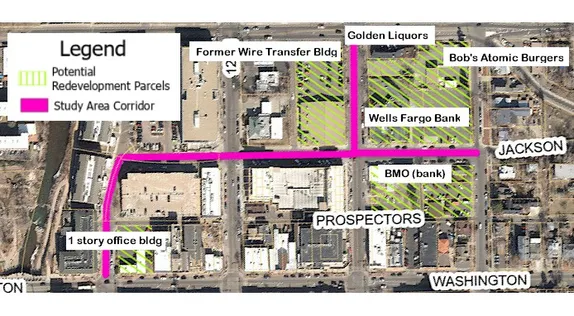Yesterday, I presented my research about previous uses of the property where CoorsTek is now demolishing buildings. Turns out, Preston Driggers has been thinking along similar lines! He's been doing a lot of research into the Binder family, and part of their holdings occupied the CoorsTek property. This is the first of a two-part article by Preston Driggers.
As excavators dismantle the Coors Tech buildings as part of the new Clayworks project, the equipment is running over ground that served Golden residents quite differently 140 years ago. Back then, 8th St was known as Wall St and today’s Jackson St was known as Miner St.
The Colorado Central Railroad (CCRR) arrived in Golden in 1870 with the main line running on Wall Street towards Clear Creek Canyon. CCRR built a siding south off the main line that ran along Wall Street.
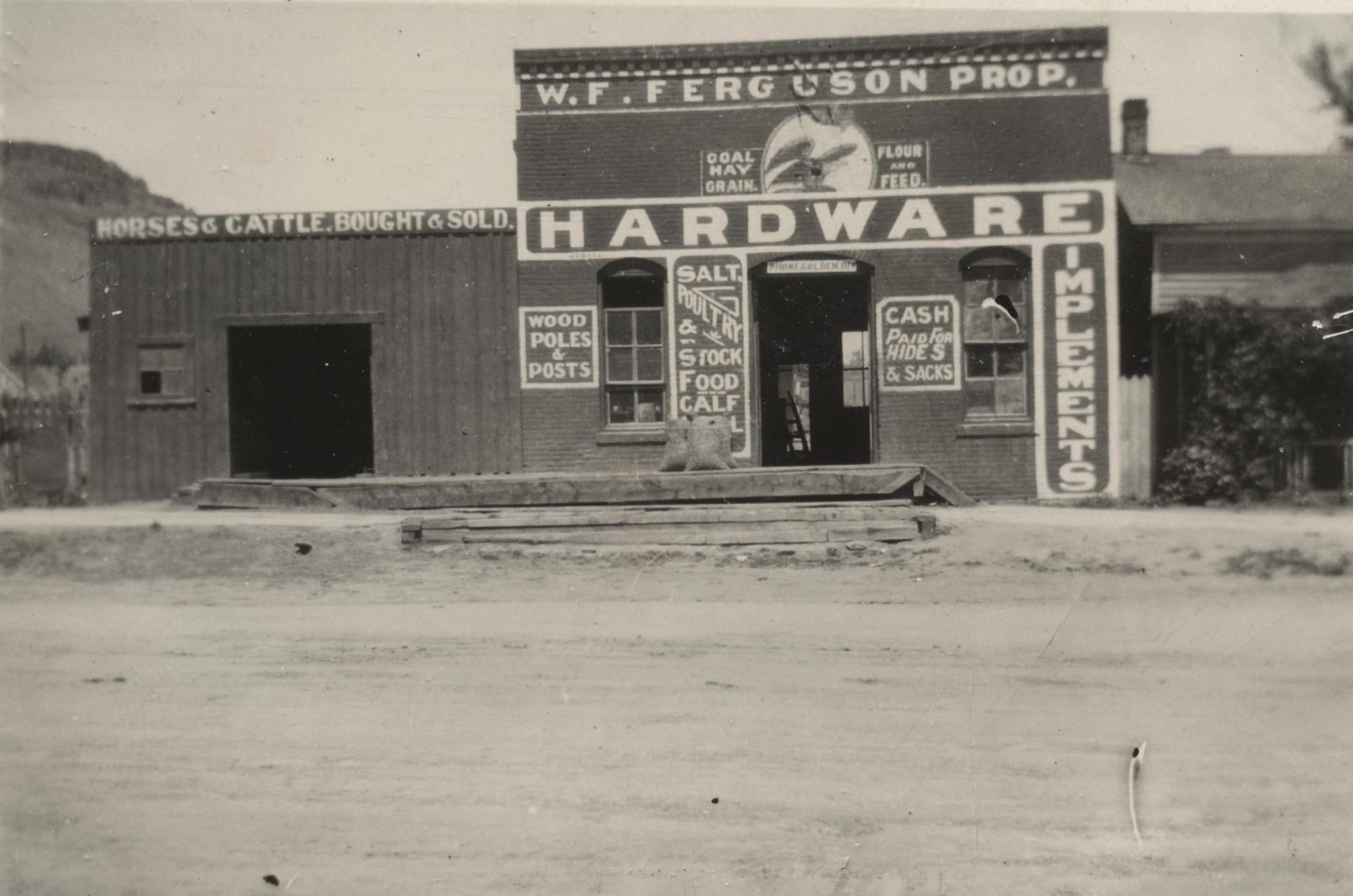
On North Washington Ave in 1874, Joachim Binder gained ownership of the well-established Eagle Corral. The year earlier he had built a brick store with backroom storage for hay and grains. He was in commission sales and needed more storage for the acquired hay, corn other feed grains sent from mid-west farmers.
In late 1879 or early 1880 he bought a large lot along the railroad siding and built a grain warehouse on the southeast corner. This location allowed easy access for unloading box cars of loose hay, oats, corn and have these available for local sales. The site of this warehouse would be in today’s terms as the imaginary intersection of 8th St. and Jackson Street, under Coors Tech buildings.
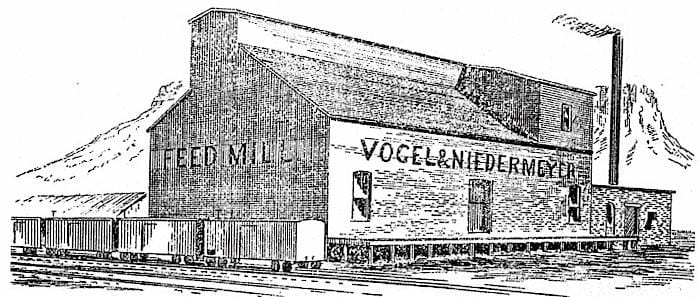
In the Fall of 1882, J. Binder added a new grain elevator to the warehouse which allowed his employees to produce custom mixing of grains, and chopped feed as desired by his customers’ for their horses, cattle and other livestock.
Then as now, in January, 1883, a strong windstorm tore the tin roof off the new elevator and it "rolled together liked a scroll and deposited this at a considerable distance from the building.” The walls of the wooden warehouse were also damaged. By late February, 1883 elevator and buildings walls were repaired.
Three years later, J. Binder and his proprietor partner, J.D. Ward, built a large addition that doubled the capacity of the warehouse. Ads at the time indicate the Eagle Corral and warehouse could manufacturer rye flour, corn meal & feed. As a tall structure, the grain elevator stood and business served the local residents and the mountain mining communities for years.
At this time, Joachim Binder was the fourth highest payer of Jefferson County property taxes, behind only the CCRR, William AH. Loveland, and the L.J. Smith & Co. Bank on Washington Ave.
Thank you, Preston Driggers--tune in tomorrow for Part 2!

